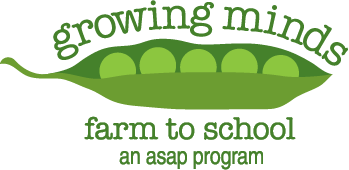 School food is not perfect, but learning more about how school food works helps us better understand the difficult task School Nutrition staff face in trying to prepare healthy food that children will eat on a very restricted budget. The budget that provides funding for school classrooms, teachers and other education-related items is NOT the same budget that supplies money for school cafeterias. The money for school lunches primarily comes from USDA reimbursements. For example, in the 2018-19 school year, in Buncombe County Schools (NC) a reimbursement for free lunch is $3.39, for a reduced fee lunch $2.99, and a full paid lunch is reimbursed $0.39. That could supply a sufficient budget until you find out that from this pot of money comes the funding for cafeteria staff salaries, food, and equipment. To top it all off, cafeteria staff are often required to pay indirect costs (electricity, custodial services, heating) and a percentage of their profits for the privilege of doing business on school property. After subtracting for labor and these other costs, a little more than $1 is left to cover food costs, including meat/meat alternate, grains/breads, two servings of vegetables/fruits, and milk.
School food is not perfect, but learning more about how school food works helps us better understand the difficult task School Nutrition staff face in trying to prepare healthy food that children will eat on a very restricted budget. The budget that provides funding for school classrooms, teachers and other education-related items is NOT the same budget that supplies money for school cafeterias. The money for school lunches primarily comes from USDA reimbursements. For example, in the 2018-19 school year, in Buncombe County Schools (NC) a reimbursement for free lunch is $3.39, for a reduced fee lunch $2.99, and a full paid lunch is reimbursed $0.39. That could supply a sufficient budget until you find out that from this pot of money comes the funding for cafeteria staff salaries, food, and equipment. To top it all off, cafeteria staff are often required to pay indirect costs (electricity, custodial services, heating) and a percentage of their profits for the privilege of doing business on school property. After subtracting for labor and these other costs, a little more than $1 is left to cover food costs, including meat/meat alternate, grains/breads, two servings of vegetables/fruits, and milk.
Reforming the school food system is an important long-term goal, and ASAP is working on incremental steps, beginning with increasing fresh local products served. ASAP’s Growing Minds Farm to School program focuses on local produce for a multitude of reasons, but is rooted in the belief that creating positive experiences with fresh fruits and vegetables encourages students to eat them. We are all more likely to eat foods we are familiar with, which is why one goal of a farm to school program is to offer students multiple connections and introductions to a variety of foods. School gardens, farm field trips and local food cooking are the educational components of farm to school that are not only engaging teaching tools, but also create these positive experiences with fresh healthy food. 2012 marked the beginning of new meal pattern requirements for school lunch, including increases in the quantity and variety of fruits and vegetables served. This type of policy change is vital for improving the school food system, but it can only be successful if combined with educational components such as those integrated into farm to school.
Creating Positive Change in the Cafeteria
While we all know that food and nutrition is directly related to learning, the lunch room has become a separate entity in many schools. Cafeteria staff are not often viewed as educators, although they are on the front lines of food education. Farm to school offers a unique opportunity to extend curriculum into the lunch period and build upon student experience. The following are a few ways in which teachers can begin to make connections between the classroom and cafeteria, creating positive change at the school level:
- Learn what local items are being served in the cafeteria and connect them to seasonal activities in the classroom.
- Interested in purchasing local food and don’t know where to start? Utilize our local food flow chart to find a solution that meets your needs.
- Have students design materials for the cafeteria bulletin board or use ours.
- Invite the cafeteria staff into the classroom to share a recipe or read a story.
- Encourage students to learn more about how school food works.
- Work with parents to offer a taste test in the cafeteria featuring local items.
- Check out the Get Local @ School materials available through ASAP that can be used in the cafeteria or classroom!
